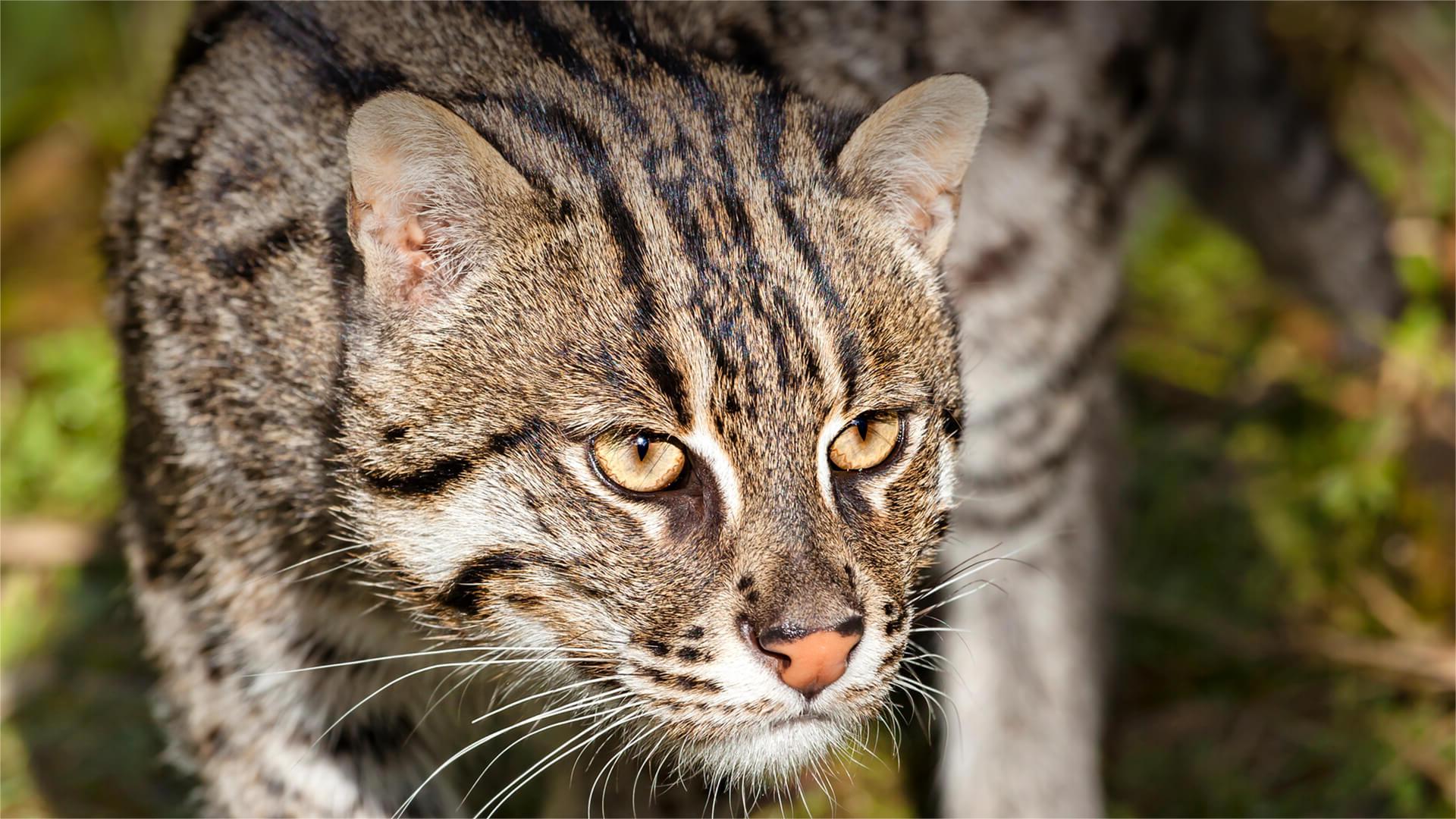
Fishing cats are fascinating creatures that often go unnoticed in the animal kingdom. These medium-sized wild cats are native to South and Southeast Asia and are known for their unique ability to hunt in water. Unlike most cats, fishing cats are excellent swimmers and have partially webbed feet to help them catch fish, their primary diet. Did you know that fishing cats can swim long distances and even dive underwater to catch their prey? They are also nocturnal, meaning they are most active at night. Unfortunately, these incredible animals are listed as vulnerable due to habitat loss and pollution. Learning about fishing cats not only highlights their unique traits but also underscores the importance of conservation efforts to protect them. Ready to dive into more intriguing facts about these aquatic hunters? Let's get started!
Fascinating World of Fishing Cats
Fishing cats are elusive creatures that inhabit wetlands and marshes. These small wild cats have unique adaptations that make them exceptional hunters in aquatic environments. Let's dive into some intriguing facts about these remarkable felines.
-
Fishing cats are native to South and Southeast Asia, primarily found in countries like India, Sri Lanka, Bangladesh, and Thailand.
-
They are medium-sized wild cats, with males weighing between 11-16 kg (24-35 lbs) and females weighing slightly less.
-
Fishing cats have a stocky build, short legs, and a short tail, which helps them navigate through dense vegetation and water.
-
Their fur is olive-gray with black stripes and spots, providing excellent camouflage in their natural habitat.
-
Unlike most cats, fishing cats are strong swimmers and can swim long distances to hunt for food.
Unique Hunting Techniques
Fishing cats have developed specialized hunting techniques to catch their prey. These skills set them apart from other wild cats.
-
They primarily hunt fish, but their diet also includes crustaceans, frogs, and small mammals.
-
Fishing cats use their partially webbed front paws to scoop fish out of the water, a technique similar to how humans use their hands.
-
They are known to tap the water's surface with their paws to mimic insect movements, attracting fish closer.
-
These cats can dive underwater to catch fish, holding their breath for up to 30 seconds.
-
Fishing cats have been observed using their keen sense of hearing to detect prey movements underwater.
Habitat and Conservation
Fishing cats face numerous threats due to habitat loss and human activities. Understanding their habitat and conservation status is crucial for their survival.
-
They inhabit wetlands, mangroves, swamps, and marshes, which are increasingly being destroyed for agriculture and urban development.
-
Fishing cats are listed as Vulnerable on the IUCN Red List, with their population declining due to habitat destruction and poaching.
-
Conservation efforts include habitat restoration, anti-poaching measures, and community awareness programs to protect these cats.
-
In some regions, fishing cats are considered sacred and are protected by local communities.
-
Captive breeding programs in zoos aim to increase their population and genetic diversity.
Reproduction and Lifespan
Fishing cats have unique reproductive behaviors and life cycles. These aspects are essential for understanding their biology and ensuring their conservation.
-
Female fishing cats typically give birth to 1-4 kittens after a gestation period of about 63-70 days.
-
Kittens are born blind and helpless, relying on their mother for food and protection.
-
They start eating solid food at around two months old and begin learning to hunt by observing their mother.
-
Fishing cats reach sexual maturity at around 9-12 months of age.
-
In the wild, fishing cats have a lifespan of about 10 years, while in captivity, they can live up to 15 years.
Behavior and Social Structure
Fishing cats exhibit fascinating behaviors and social structures that differ from other wild cats. These traits provide insight into their daily lives and interactions.
-
They are primarily nocturnal, being most active during the night when they hunt and patrol their territory.
-
Fishing cats are solitary animals, with males and females only coming together for mating.
-
They communicate through vocalizations, scent marking, and visual signals to establish territory and attract mates.
-
Fishing cats are known to be highly territorial, with males having larger territories that overlap with those of several females.
-
Despite their elusive nature, fishing cats play a crucial role in maintaining the balance of their ecosystem by controlling fish and small mammal populations.
The Fascinating World of Fishing Cats
Fishing cats are truly unique creatures. Their webbed feet, water-loving nature, and impressive hunting skills make them stand out in the animal kingdom. Found mainly in South and Southeast Asia, these cats thrive in wetlands, mangroves, and marshes. Sadly, habitat loss and human activities threaten their existence, putting them on the endangered list.
Conservation efforts are crucial to protect these amazing animals. Organizations are working hard to preserve their habitats and raise awareness about their plight. By supporting these initiatives, we can help ensure fishing cats continue to thrive in the wild.
Next time you think about cats, remember the fishing cat. Their incredible adaptations and vital role in their ecosystems make them worth protecting. Let’s do our part to safeguard their future.
Was this page helpful?
Our commitment to delivering trustworthy and engaging content is at the heart of what we do. Each fact on our site is contributed by real users like you, bringing a wealth of diverse insights and information. To ensure the highest standards of accuracy and reliability, our dedicated editors meticulously review each submission. This process guarantees that the facts we share are not only fascinating but also credible. Trust in our commitment to quality and authenticity as you explore and learn with us.
